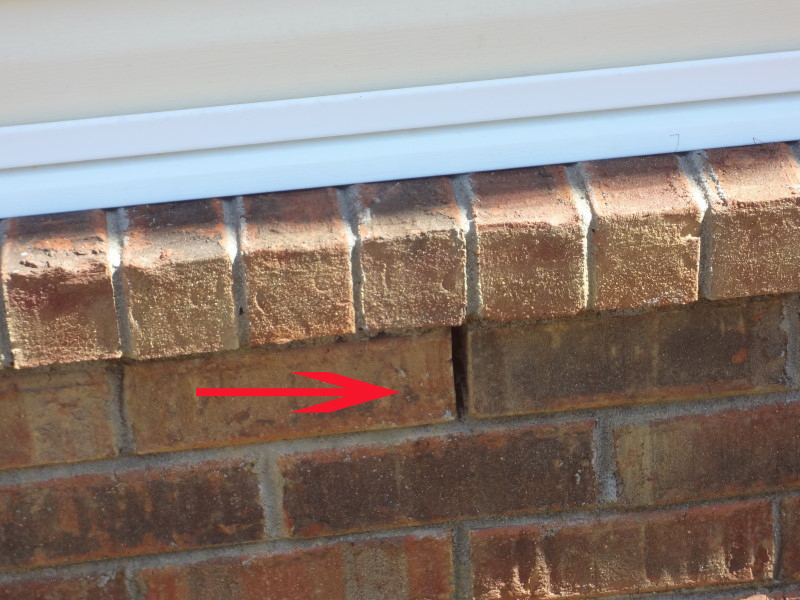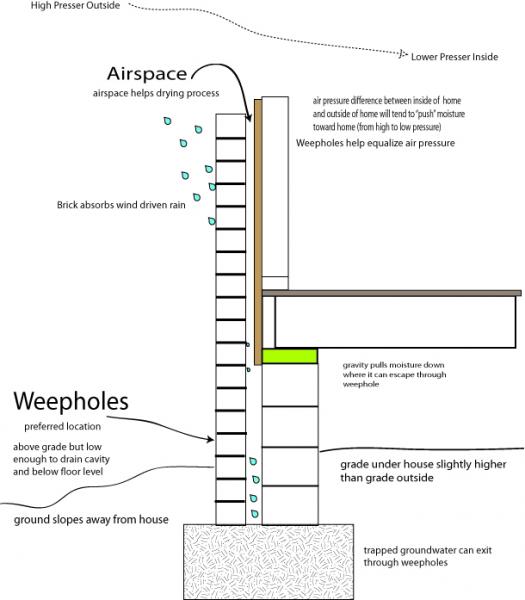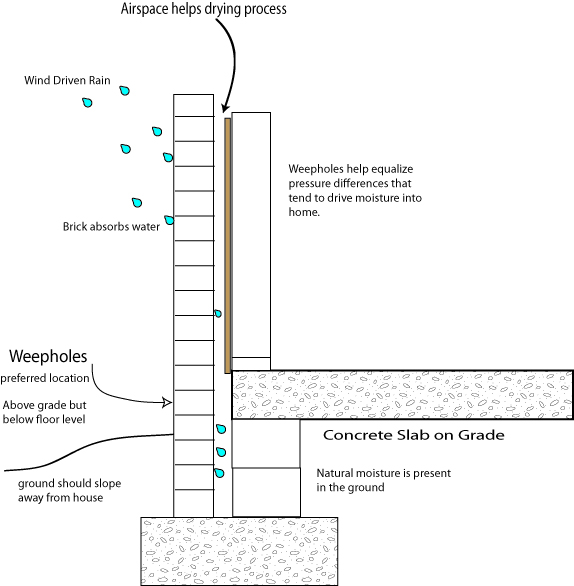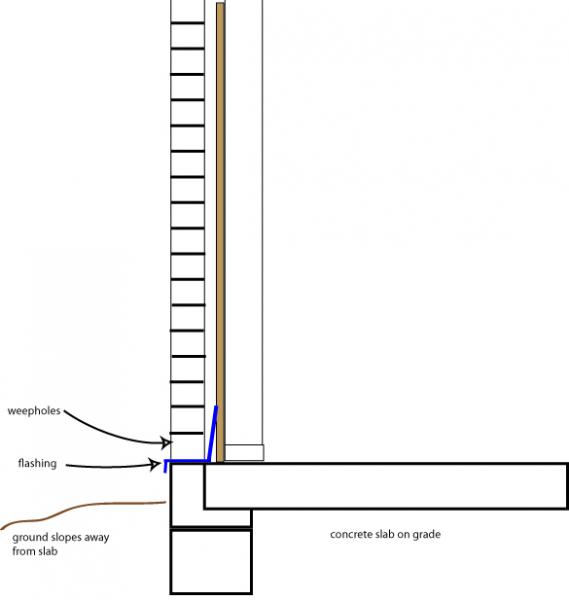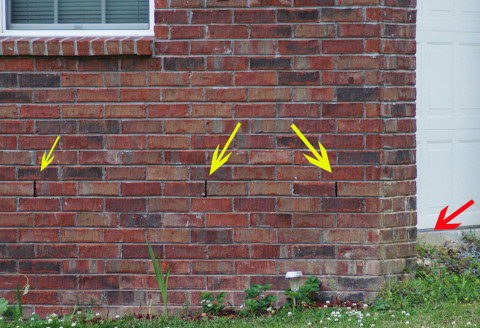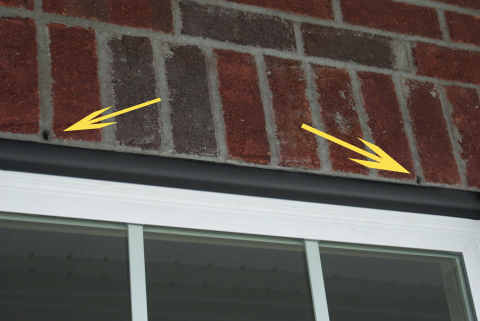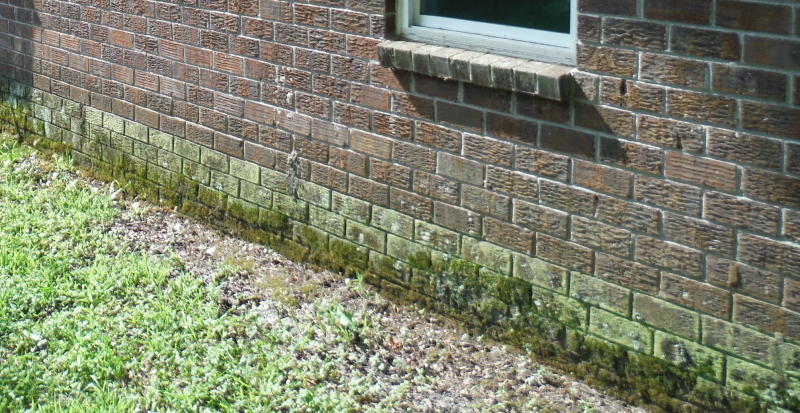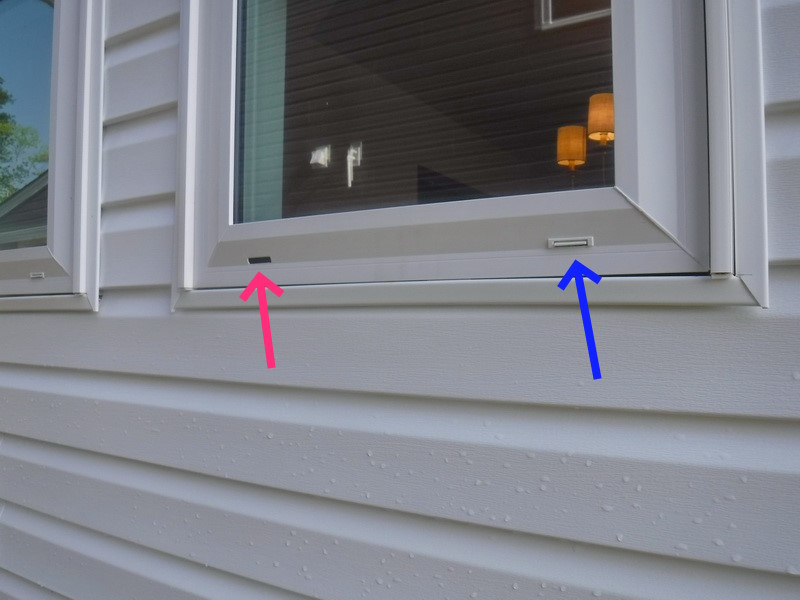Weep holes are the little gaps in brickwork near the bottom that allows moisture to escape from the wall cavity. They’re required to be spaced 33″ apart right above the flashing. They also help to equalize air pressure and dry the wall cavity out. Some vinyl windows also have weep holes to dry out the inside cavity that may be prone to condensation accumulation. However our discussion today is limited to brick veneer siding.
- Since bricks can absorb quite a bit of moisture there must be a way for the moisture to drain out.
- Vapor drive is generally from a high pressure zone to a low pressure zone. So the holes help equalize the pressure thus reducing vapor drive through the brick.
- They help ventilation behind the brick so it helps dry out the wall cavity.
In the picture above is a house about 30 years old with no weep holes and a raised concrete slab on grade. Can you tell where the finished floor in the house begins? That’s right the lack of weep holes has made it hard for moisture to escape allowing moss to grow on it. In a raised slab the dirt under the slab will pull moisture from the ground (after it rains for instance or simply from a high water table). This makes it necessary to provide weep holes. You don’t see it (moss) above the finished floor because of the natural way moisture is pulled through certain building materials thus allowing it to dry out. The damage could be worse but we have mild winters here. As bricks absorb moisture they are more subject to freeze thaw cycle damage, efflorescence, spalling, chipping etc.
Blue Palmetto Home Inspection Serves Summerville, Goose Creek, Moncks Corner and Surrounding areas in SC. Call us today at 843-934-3045

